We had to get up very early to take a 6 am flight. It was a one-hour short flight. When we arrived, a new tour guide was waiting for us. His name was Eusebio, a practicing lawyer. He was working as a tour guide as well as practicing law because a tour guide earns him more money. He would be traveling throughout our remaining tour.
Sucre is still Bolivia's political capital. But, it has only the Supreme Court of its political branches. As I explained in the La Paz blog post, La Paz has the Presidential Office and the Parliament. Naturally, all diplomatic embassies are also in La Paz. About 40 years ago, one president had a political ambition to embrace the commercial power concentrated in La Paz, so he moved his office to La Paz. There was a battle between Sucre and La Paz. The battle has subsided in appearance, but the tension between the two cities remains, as Eusebio explained.
It was raining and Eusebio took us to a central plaza and we walked in the rain to Asur Textile Museum.
Unfortunately, we were not allowed to take photos inside the museum. Basically, the museum displayed two different textile cultures of Bolivia: Jalq'a culture and Yampara culture. Jalq'a culture centers around two colors of red and black in its textile fabrics while Yampara culture's fabrics were quite colorful with stories. Here are examples:
Can you tell which ones represent which culture? Right, the first one is of Jalq'a and the second one is of Yampara. I was able to take some photos at the museum store, including an old lady who was actually making fabrics manually.
 |
| An old lady making fabrics manually |
We wanted to buy some fruits and Eusebio took us to Mercado Central or Central Market. As usual, the market was full of colors and we bought several different kinds of fruits including Tuna, a cactus fruit. No, it is not related to Tuna fish.
Eusebio stopped
We had lunch at a restaurant that looked like a hangout place for expatriates. The meal was good.After lunch, we drove to Potosi for three hours. We passed through several different climates and terrains.
We saw a flooded area...
At one point, a herd of Viscunas, the smallest of the family, was crossing the road. Apparently, Viscuna wool is most expensive among all other kinds of wool and is exported to Italy.
While we were driving, our driver Jose was constantly chewing something. When asked, he showed the Coca leaves that help him with altitude sickness. We also chewed some.
Eusebio took us to a church to show us the facade of the building. The church building facade was covered with many figures of their legends and traditional faiths in addition to the Roman Catholic figures. How interesting! But, that is the way Catholic is perceived in Bolivia and many other Latin American countries. Jesus is just one of many gods... Yikes!
Before we started climbing up the hill, I took some photos at the plaza where many students were taking photos apparently after their graduation ceremony.








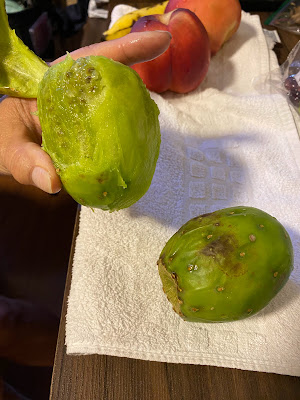

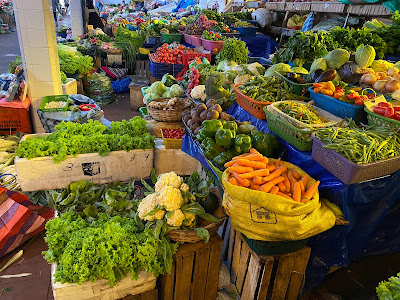

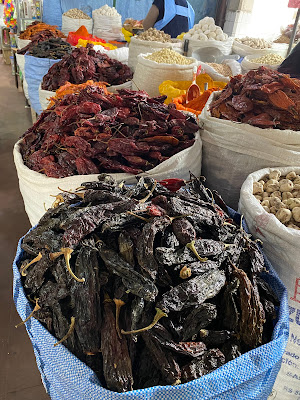



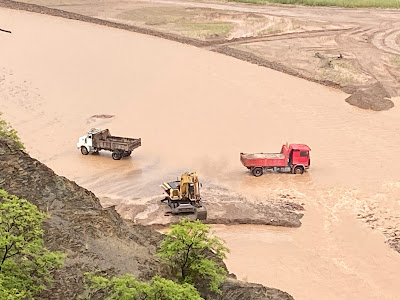






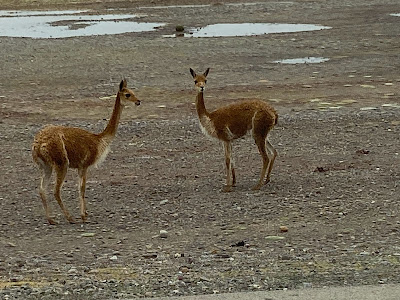




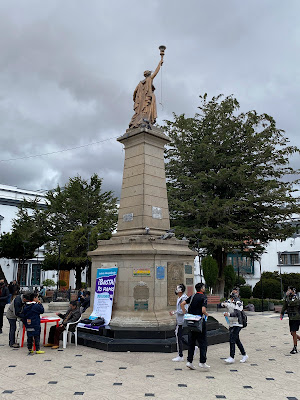

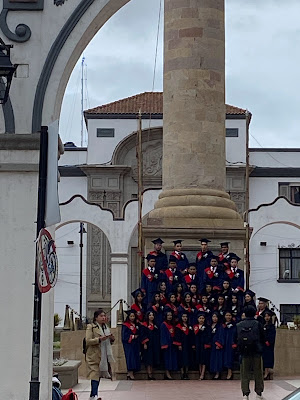
No comments:
Post a Comment